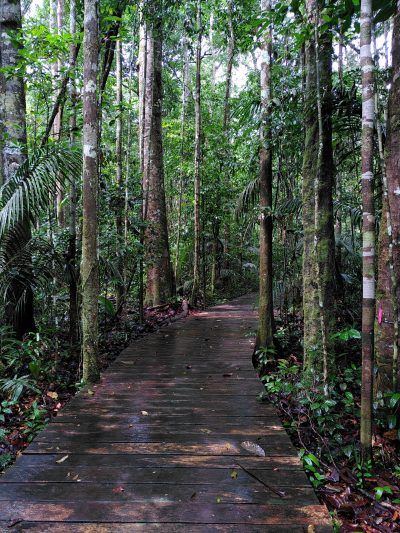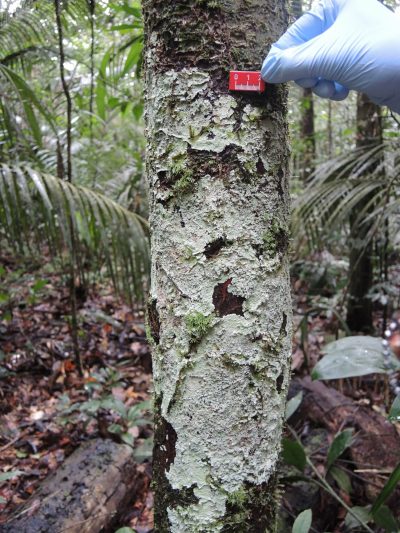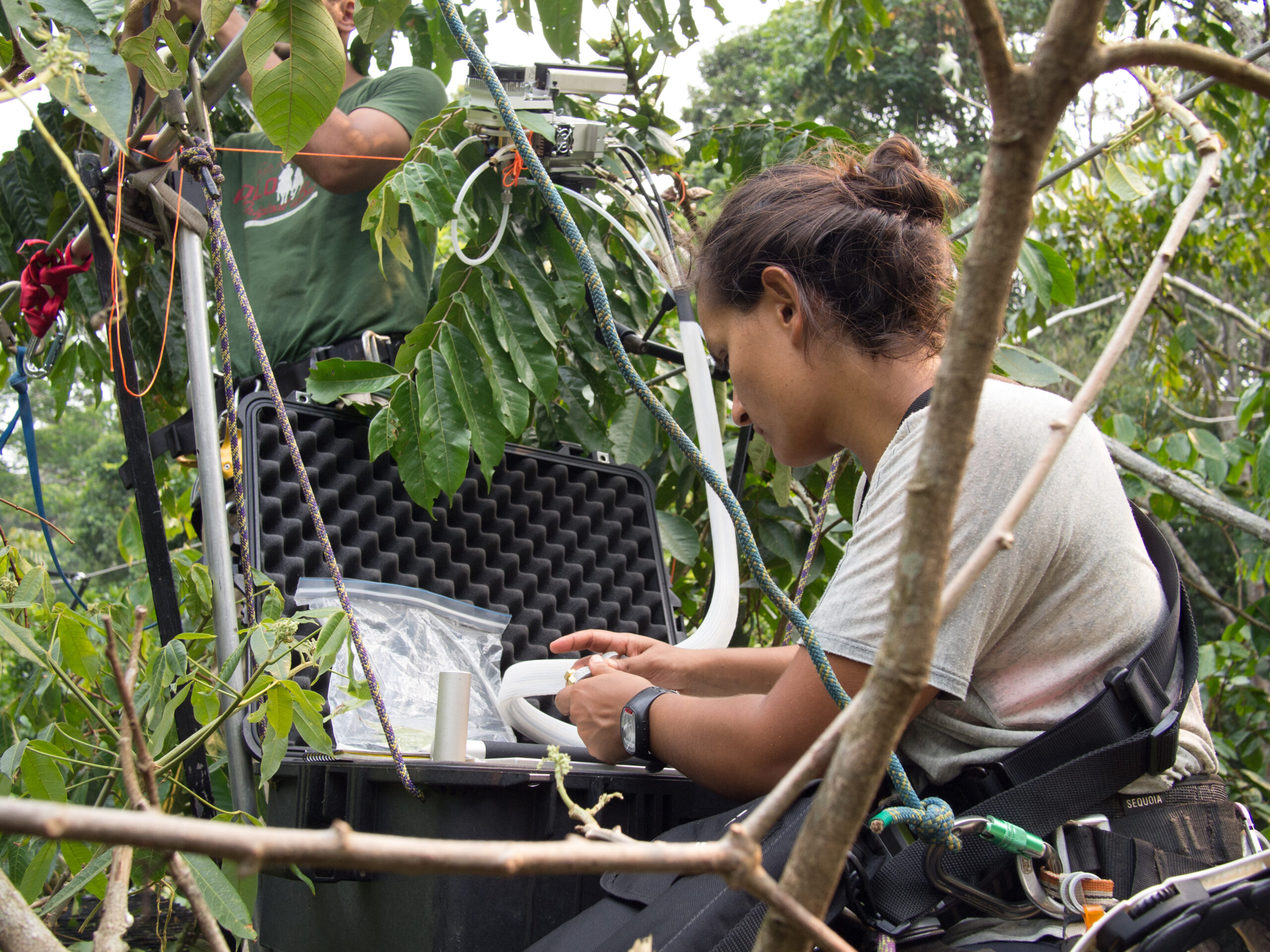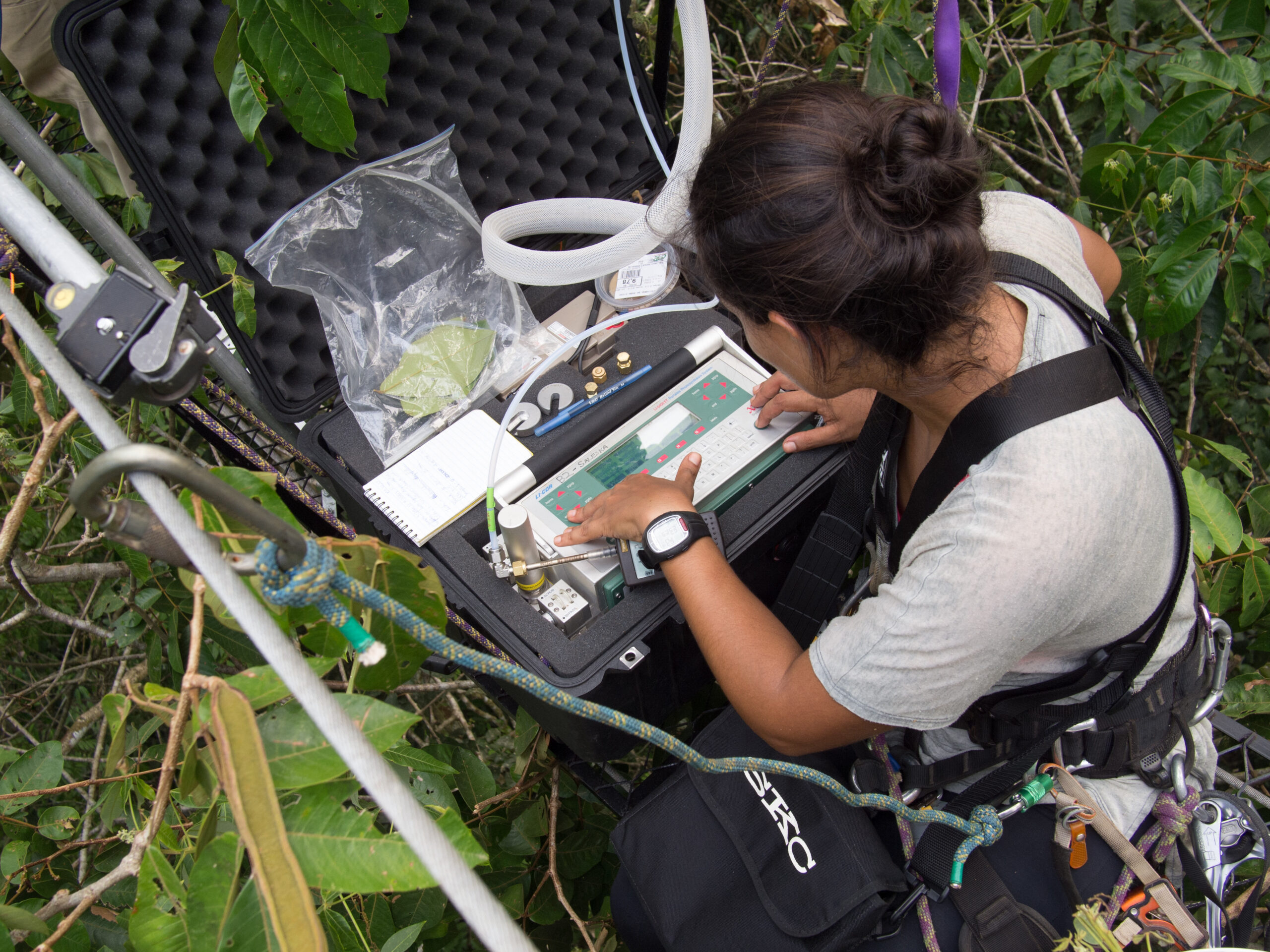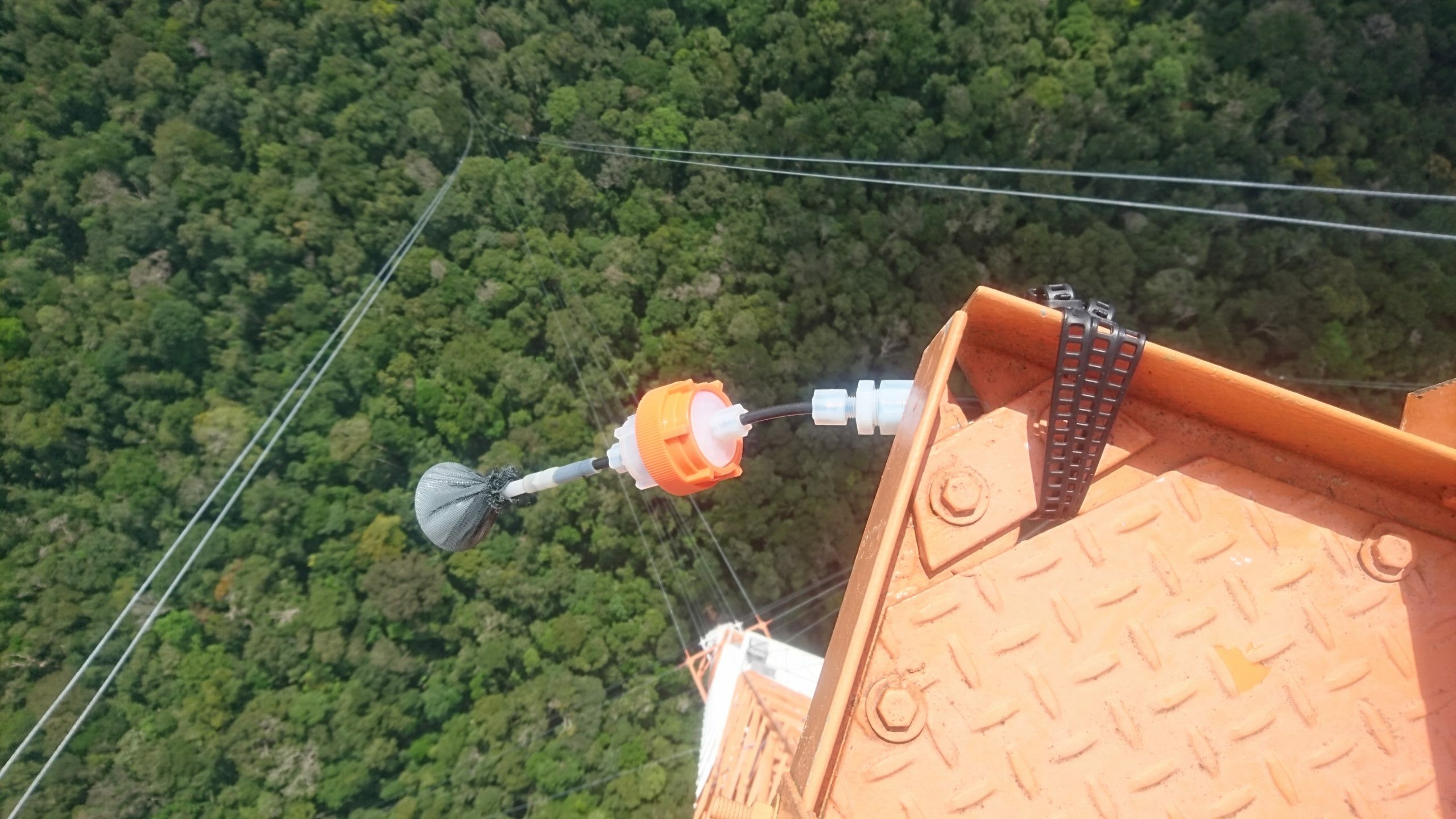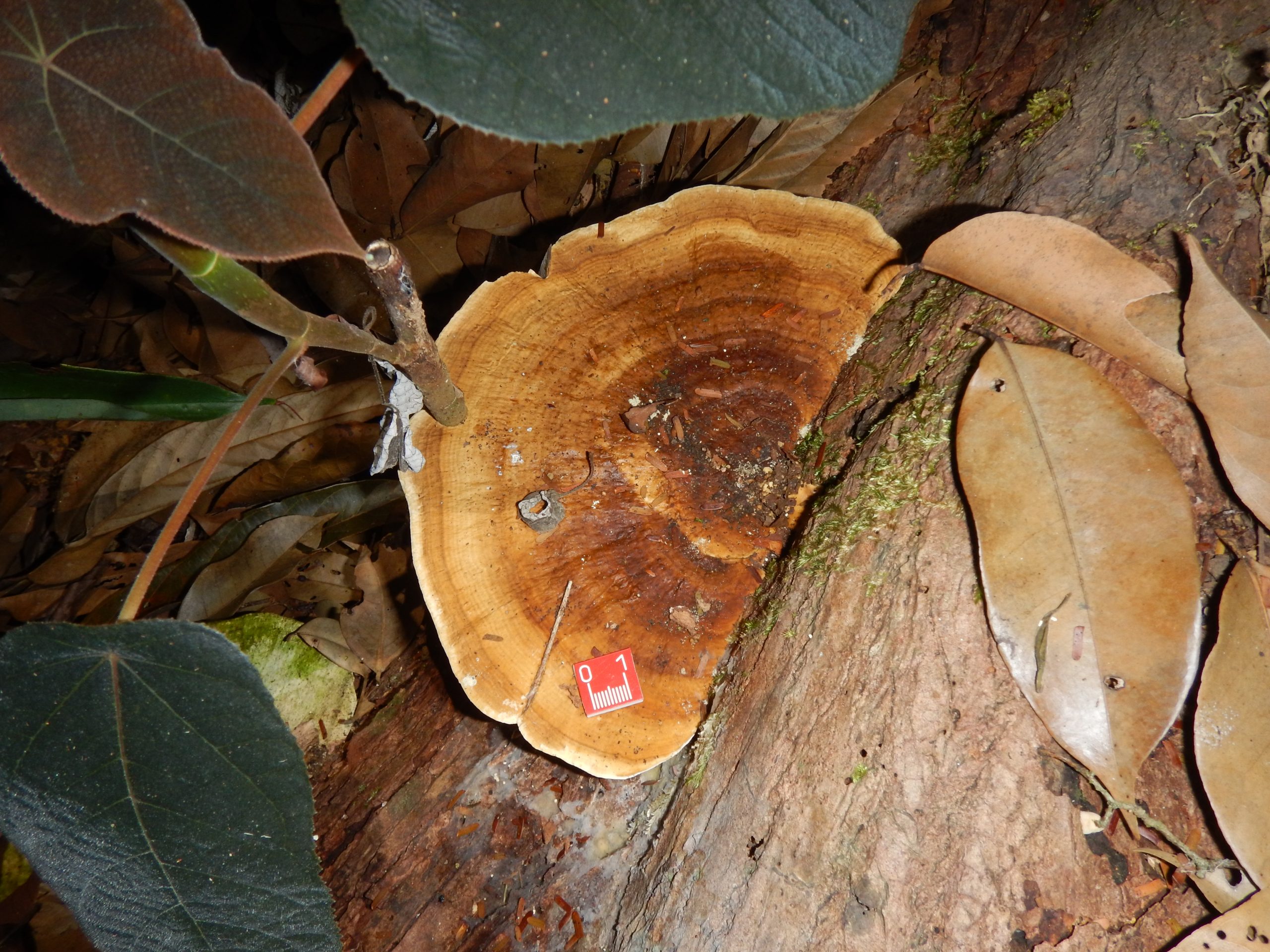BVOC emissions of tropical forests
Tropical rainforests are the largest source of biogenic volatile organic compounds (BVOCs) in the world. BVOCs are highly reactive in the atmosphere, reacting for example with ozone. Through these reactions, BVOCs can influence local ozone levels and produce particles that, in turn, affect cloud formation and precipitation. They also have an impact on the lifetimes of globally relevant greenhouse gases like methane and pollutants like carbon monoxide.
To date, researchers have considered tropical forest trees as the most important source of BVOC emissions. They are thought to occur as a direct result of photosynthesis, primarily from the leaves of the forest canopy. However, if you look closely in the rainforest, you can see lichens and mosses everywhere. They cover a large part of the area on tree trunks, lianas and, in some cases, even leaves. That is also the case in the forest around ATTO. Faced with this extensive coverage of so-called cryptogams, which include mosses and lichens, Achim Edtbauer and his colleagues wondered whether they also contribute to the emission of volatile organic compounds in tropical rainforests.
The role of cryptogams
Previous studies have revealed that cryptogams are important for the microclimate of the forest. In addition, they play a role in nutrient cycling and influence the overall fitness of the plant they live on, and those and surrounding it. Even though mosses and lichen appear like small organisms, their sheer abundance makes up for that. They fix large amounts of carbon every year, contributing 7% to the carbon fixation of all vegetation on land. Cryptogams are also known to be greenhouse gases like N2O, but their VOC emissions have rarely been studied before, especially in the tropics.
Over a two-year period (November 2016 – November 2018), Achim Edtbauer and his team measured BVOC emissions from ten moss and ten lichen samples. They concentrated on species frequent around the ATTO site and representative of Amazonian terra firme forests. For the measurements, they carefully removed the cryptogams from the tree back and placed them in small glass cuvettes. In one they put a sample of a common moss (or lichen), and the other they left empty. They then pumped jungle air through both and observed how the mosses and lichens affected the composition of the air compared to the blank.
Surprisingly, they found that these species emit significant amounts of one type of VOC called Sesquiterpenes. These compounds react rapidly with ozone to form oxygenated compounds and particles in the air. Sesquiterpenes in particular influence atmospheric composition and affect air quality, climate, and ecosystem processes, among other things.
Do mosses and lichen affect the climate?
If you take into account the abundance of cryptogams, their combined emissions reach levels similar to those of trees. Extrapolated to the global area of tropical rainforests, lichens and especially mosses contribute substantially to the global sesquiterpene emissions. However, until now, atmospheric and climate models have disregarded mosses and lichens in their calculations and forecasts.
The study also revealed yet another discovery. Mosses and especially lichens take up oxidized compounds from the air. They do so at a rate comparable to the rate at which these oxidized compounds are removed from the air by reactions with radicals. Thus, they “distort” the mixing ratio of chemicals produced by the forest. Interestingly, however, the lichens and mosses do not take up compounds emitted directly by the trees. Instead, they allow the emissions to be oxidized in the atmosphere before they are taken up.
In a next step, the scientists want to measure the exchange of BVOCs from mosses and lichens under controlled laboratory conditions. This is the only way to find out how temperature, light and humidity affect emissions and to look for other variables that control the exchange. With this knowledge, scientists can then integrate these cryptogamic emissions into atmospheric and climate models. This can contribute to more accurately depicting the effects of drought on the rainforest, for example.
Achim Edtbauer et al. published the study “Cryptogamic organisms are a substantial source and sink for volatile organic compounds in the Amazon region” Open Access in the journal Nature Earth and Environment.
Similar articles
Direct measurements of OH radicals are rare and difficult to achieve. However, since they react with BVOCs, Ringsdorf et al. inferred them from isoprene measurements at ATTO. To do so, they applied a technique called ‘Dynamical Time Warping’ from the field of speech recognition. Akima Ringsdorf et al. published the study “Inferring the diurnal variability of OH radical concentrations over the Amazon from BVOC measurements” Open Access in Nature Scientific Reports.
Eliane Gomes Alves and her colleagues measured isoprene emissions at the ATTO 80-meter tower across three years to better understand how these emissions vary seasonally and under extreme climatic conditions like El Niño events. They also looked into which biological and environmental factors regulate the emission of isoprene to the atmosphere.
BVOC emissions in the Amazon have been studied for decades, but we still don’t fully understand when and under what conditions tree species or even individual trees emit more or fewer isoprenoids. To address this, Eliane Gomes Alves and her colleagues measured isoprenoid emission capacities of three Amazonian hyperdominant tree species.
Biogenic volatile organic compounds remove OH from the atmosphere through chemical reactions, which affects processes such as cloud formation. In a new study, Pfannerstill et al. reveal the important contributions of previously not-considered BVOCs species and underestimated OVOCs to the total OH reactivity.
A new study by Löbs et al. in Biogeosciences documents the microclimatic conditions for tropical mosses as a baseline for studies on their overall relevance on biogeochemical cycling. They found that water and light are overall the most important requirements for them to become photosynthetically active. However, their habitat determines which of the two plays the bigger role.
Nora Zannoni and her colleagues measured BVOC emissions at the ATTO tall tower in several heights. Specifically, they looked at one particular BVOC called α-pinene. They found that chiral BOVs at ATTO are neither equally abundant nor is the ratio of the two forms constant over time, season, or height. Surprisingly, they also discovered that termites might be a previously unknown source for BVOCs.
Fungal spore emissions are an important contributor to biogenic aerosols, but we have yet to understand under what conditions fungi release their spores. Nina Löbs and co-authors developed a new technique to measure emissions from single organisms and tested this out at ATTO and with controlled lab experiments. They published their results in the Open Access Journal Atmospheric Measurement Techniques.
Pfannerstill et al. compared VOC emissions at ATTO between a normal year and one characterized by a strong El Nino with severe droughts in the Amazon. The did not find large differences, except in the time of day that the plants release the VOCs. They published their results in the journal Frontiers in Forest and Global Change.


